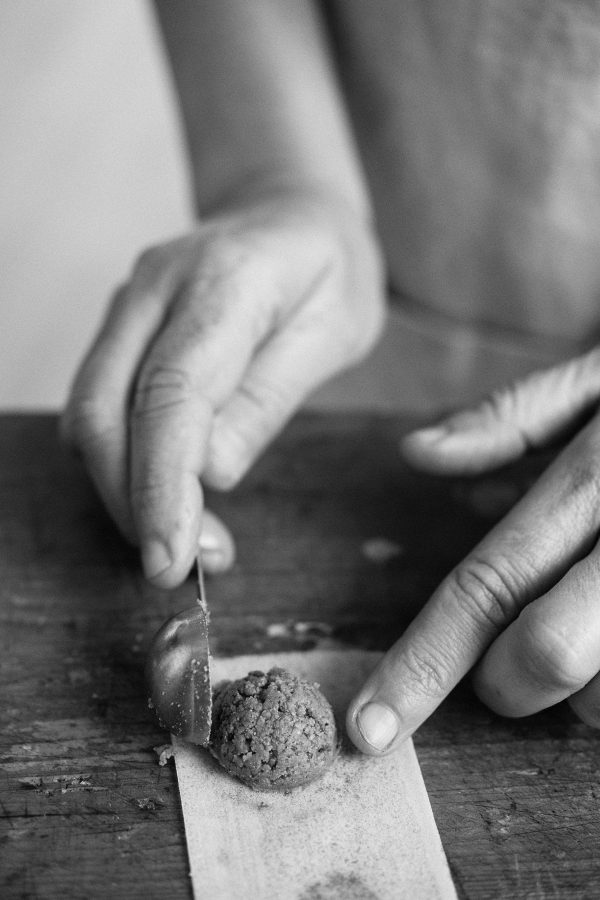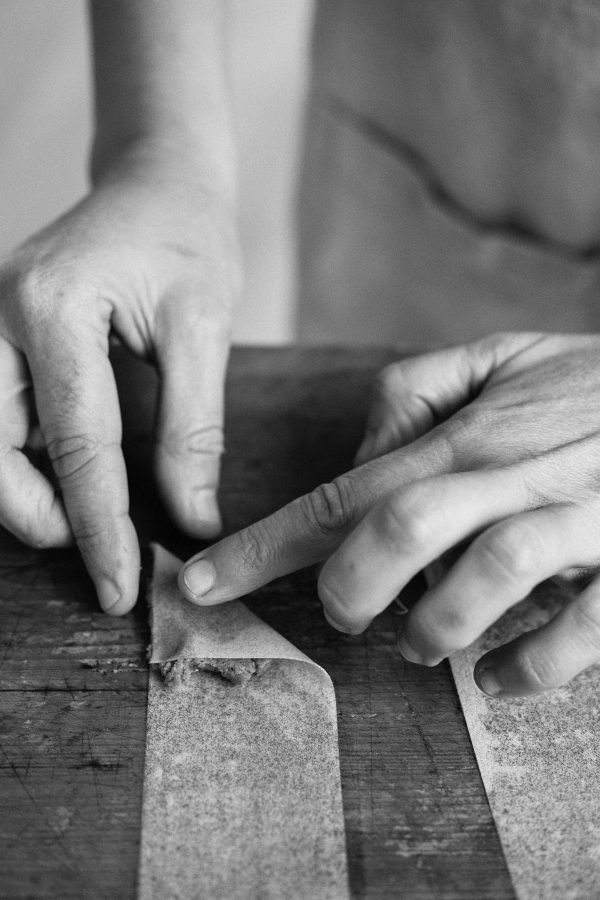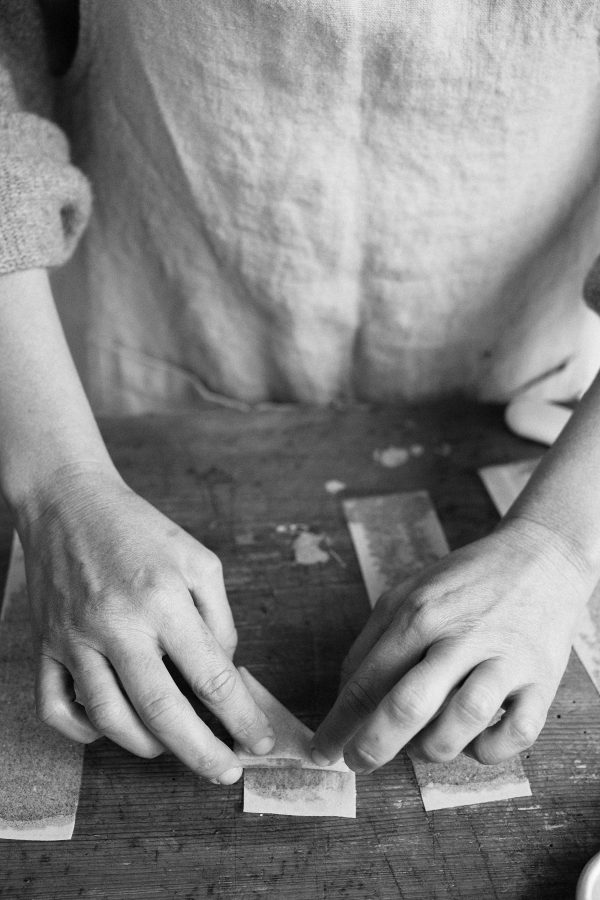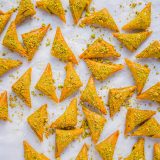Cookies in Tunisia are an intense affair. Shoppers in crowded open-air markets bark orders for a kilo of this one or that, while boys scoop the treats out of mounds piled high and sticky with treacle. Behind them, their fathers and uncles churn out more in kitchens humid with syrup and oil.
Their variety seems innumerable—rounds, oblongs, triangles, most filled with rich pastes of ground nuts and tender-sweet dates, sometimes dusted with sesame seeds. Broadly, they are called makrout.
At Kairouan Makrout—a tiny shop at the edge of a street market in Kairouan—Nourredine Rebah rolls out long, thick cords of tender semolina dough, stuffing and folding, then—Whack! Whack! Whack!—cuts them into bites with a massive knife and a staccato rhythm. With a large mesh scoop, another man whisks them up and drops them into a cauldron of hot oil.
The makrout fry briefly, then are scooped again, this time into glistening hot syrup, before finally landing in mounds where they will sell for 3 Tunisian Dinars (about $1.20) per kilogram. The texture is similar to a tender shortbread. The flavor is deep, rich and sweet, yet somehow not overbearing or cloying.
They were delicious. And dismaying. I loved the floral-sweet flavors, the tender bite. But that process! Not a likely transfer to home cooking.
Apparently, Haoua Ben Rhouma felt the same. The Tunisian woman had invited me to her daughter-in-law's home to watch as she prepared a Ramadan feast, the heart of which was couscous topped with grouper stew.
It was fantastic, but it was the dessert that got my attention. Samsa—a cousin of makrout, minus the dates—paired with bursting-ripe fresh figs.
The samsa—delicate two-bite morsels—were folded into tight triangles of thin, crisp dough filled with hazelnuts ground to a paste with powdered sugar. Simple. Sweet. And rich, but not heavy.
As with makrout, tradition calls for deep-frying samsa—as so many Tunisian cookies are. It seemed I'd found another treat that would never translate.
But Ben Rhouma corrected me. She finds the flavor of fried cookies heavy and the cooking cumbersome. So instead, she bakes them until crisp and toasted. Suddenly, samsa were a contender.
The sugar syrup, of course, remained. But even this she lightened with a splash of lemon juice, which brightens the flavors, lightens the sweetness and balances the richness of the nuts.
Bringing samsa back to Milk Street still required some adaptations. Ben Rhouma uses purchased sheets of malsouka—a paper-thin Tunisian wheat flour pastry—for the wrappers, a product mostly unknown here.
We tried phyllo dough, but found it too fussy and delicate. Egg roll wrappers were too thick. Fresh spring roll wrappers—while slightly thicker than malsouka—worked perfectly.
Though we loved the hazelnuts, we experimented with alternatives and liked pistachios even more. Folded into tight triangles and baked until crisp, then brushed with lemon syrup, our samsa lacked only Ben Rhouma's figs.
Milk Street Method Filling, shaping and sealing

1. On each strip, place a teaspoon pistachio paste.

2. Fold the bottom left corner over the filling.

3. Fold the triangle over several times, aligning the wrapper's edges.

4. Brush the top flap with water, then fold the wrapper over to seal.




